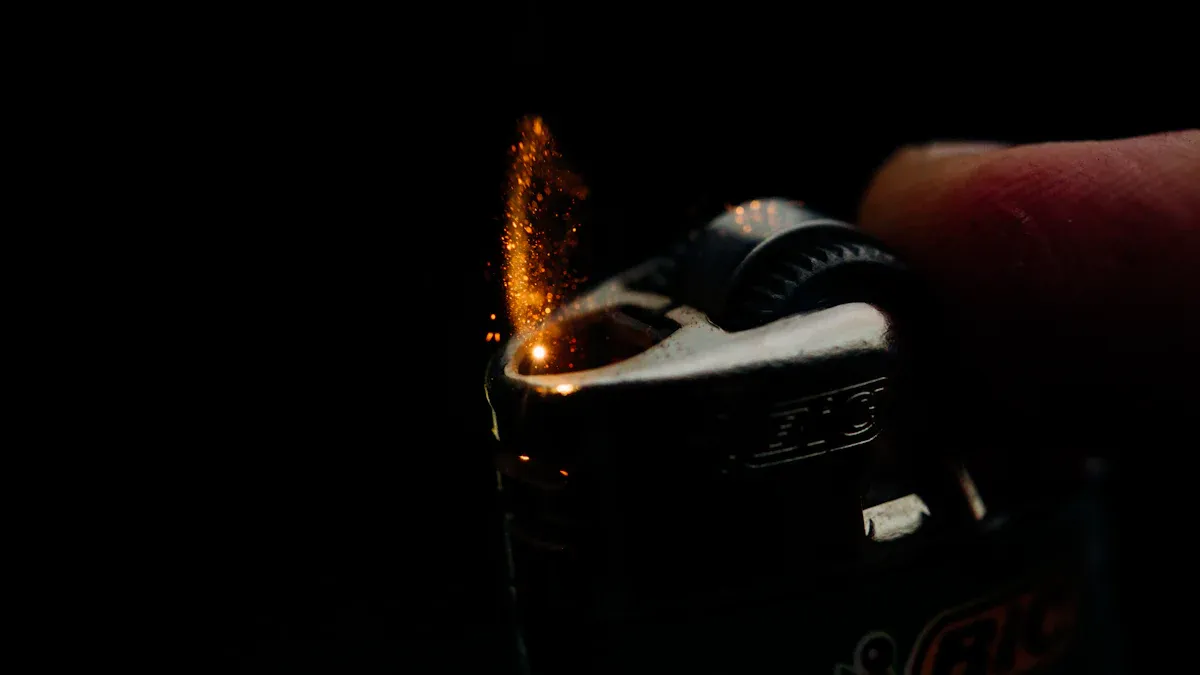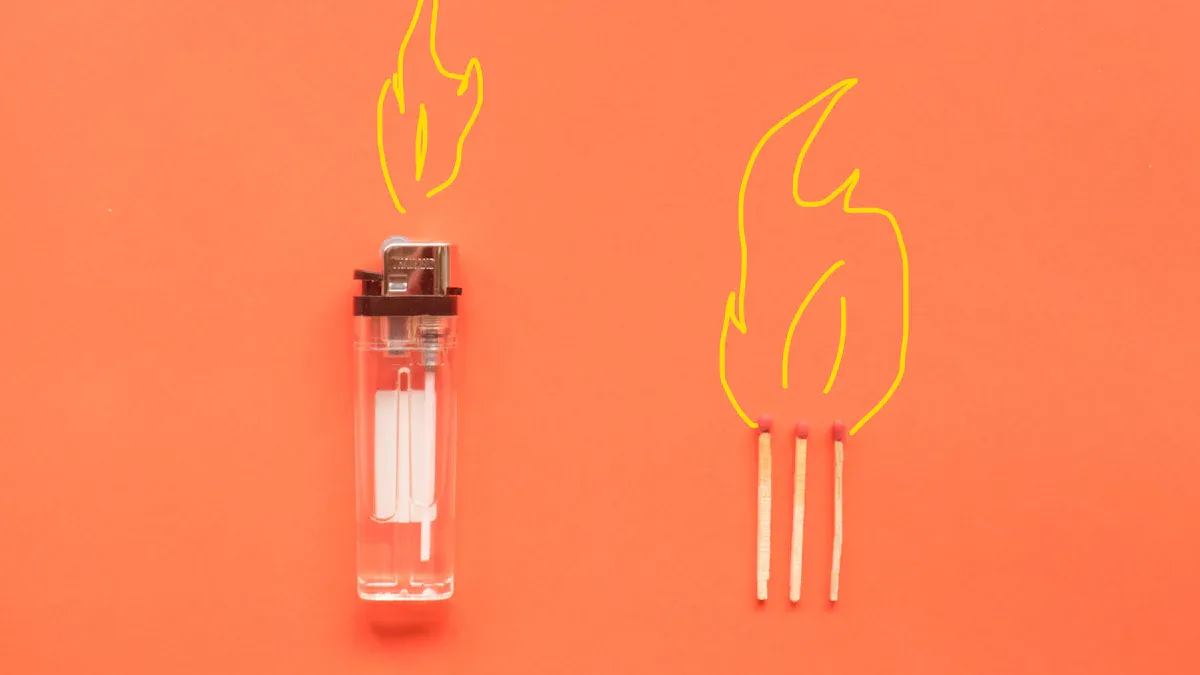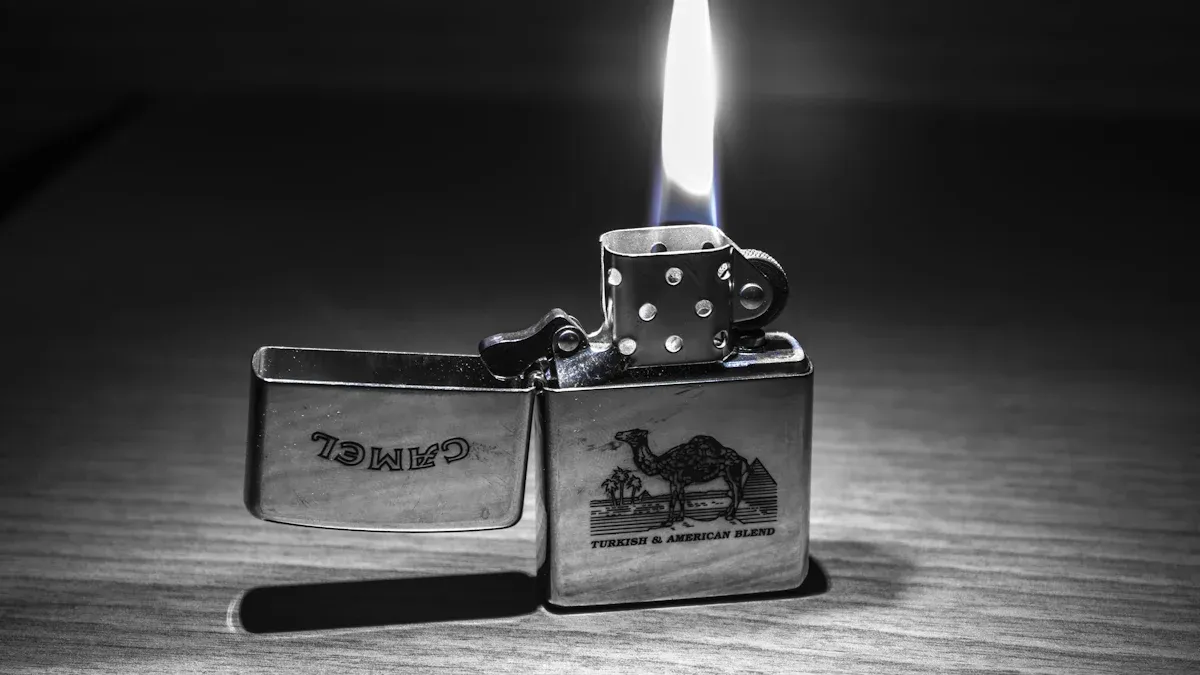
A lighter making machine plays a key role in producing lighters with precision and speed. It automates the process, ensuring every lighter meets high standards. Whether disposable or refillable, these machines handle the work efficiently. By exploring their function, you can discover the fascinating steps behind creating this everyday tool.
Key Takeaways
- Machines make lighters quickly and with good quality. These machines help factories create thousands of lighters every day.
- Checking quality is very important when making lighters. Each lighter is tested carefully to make sure it works safely before being sold.
- Using machines to make lighters lowers mistakes and saves time. This helps keep the quality steady and allows for different lighter styles.
What Is a Lighter Making Machine?

Definition and Role in Manufacturing
A lighter making machine is a specialized device designed to produce lighters efficiently and consistently. It automates the entire manufacturing process, ensuring every lighter meets strict quality standards. You might think of it as the backbone of lighter production, combining advanced technology with precision engineering.
These machines handle tasks that would be difficult or time-consuming if done manually. They mold, assemble, and test components with remarkable accuracy. By using a lighter making machine, manufacturers can produce thousands of lighters in a short period, meeting global demand without compromising quality.
Tip: Automation in manufacturing not only speeds up production but also reduces human error, ensuring safer and more reliable products.
Types of Lighters Produced
Lighter making machines are versatile. They can produce a wide range of lighter types to suit different needs. Disposable lighters, often made from plastic, are one of the most common products. These are lightweight, affordable, and designed for single-use convenience.
Refillable lighters, on the other hand, offer a more sustainable option. These models are crafted with durable materials like metal and allow you to refill them with fuel when they run out. Some machines even specialize in creating windproof lighters, which are perfect for outdoor enthusiasts.
Manufacturers use lighter making machines to create lighters with unique designs and features. Whether it’s a simple disposable lighter or a high-end refillable model, these machines ensure every product is functional and safe to use.
How Does a Lighter Making Machine Work?
Material Feeding and Preparation
The process begins with feeding raw materials into the lighter making machine. These materials include plastic, metal, and fuel components. You might notice that each material is carefully selected to ensure durability and safety. The machine uses automated feeders to transport these materials to the appropriate sections.
For example, plastic pellets are melted and shaped into the lighter’s body using die-casting units. Metal parts, such as the flint wheel and spring, are prepared separately. This stage ensures that every component is ready for the next step.
Note: Proper material preparation is crucial. It ensures the lighter functions correctly and meets safety standards.
Assembly and Component Integration
Once the materials are ready, the machine moves to the assembly phase. Here, it combines all the components to create a functional lighter. The process involves attaching the flint wheel, inserting the fuel chamber, and securing the ignition system.
The lighter making machine uses robotic arms and precision tools to perform these tasks. This level of automation ensures that each lighter is assembled with accuracy. You can think of it as a high-tech puzzle where every piece fits perfectly.
Some machines even include advanced features like laser-guided alignment. This technology ensures that every part is positioned correctly, reducing the risk of defects.
Quality Control and Testing
After assembly, the lighters undergo rigorous quality control. The machine tests each lighter to ensure it works as intended. For instance, it checks the ignition system, fuel flow, and flame stability.
Defective lighters are automatically removed from the production line. This step guarantees that only high-quality products reach the market. You can trust that every lighter has passed strict safety tests before it reaches your hands.
Tip: Quality control is not just about functionality. It also ensures that the lighter is safe to use, reducing the risk of accidents.
Packaging and Final Output
The final stage involves packaging the lighters for distribution. The machine organizes the lighters into batches and places them in boxes or blister packs. This step is fully automated, ensuring consistency and efficiency.
You might find it fascinating that some machines even print labels and barcodes during this stage. This feature streamlines the process, making it easier for manufacturers to track and ship their products.
Once packaged, the lighters are ready for delivery. The entire process, from material feeding to packaging, showcases the efficiency of a lighter making machine.
Key Components of a Lighter Making Machine

Material Feeders and Die-Casting Units
Material feeders play a vital role in ensuring the smooth operation of a lighter making machine. These feeders transport raw materials like plastic pellets and metal parts into the machine. Each material is measured precisely to avoid waste and ensure consistency.
Die-casting units then take over to shape the lighter’s body. These units melt plastic or metal and inject it into molds. This process creates the outer casing and other essential components. You might find it fascinating that these molds are designed with extreme precision to ensure every lighter looks identical.
Note: Proper feeding and casting are essential for creating durable and safe lighters.
Assembly Mechanisms
The assembly mechanisms are where the magic happens. These systems combine all the individual parts into a complete lighter. Robotic arms and automated tools handle tasks like attaching the flint wheel, inserting the fuel chamber, and securing the ignition system.
You can think of this stage as a high-tech assembly line. Every movement is calculated to ensure accuracy. Some machines even use sensors to detect misaligned parts, preventing errors before they occur.
Quality Check Systems
Quality check systems ensure that every lighter meets safety and performance standards. These systems test the ignition, fuel flow, and flame stability of each lighter. Any defective product is immediately removed from the production line.
You can trust that these checks guarantee the lighters are safe to use. Manufacturers rely on these systems to maintain their reputation and meet regulatory requirements.
Automation and Advanced Technology
Automation is the backbone of a modern lighter making machine. Advanced technology, like laser-guided alignment and AI-driven controls, ensures precision at every step. These innovations reduce human error and increase production speed.
You might be surprised to learn that some machines can even adapt to different lighter designs without manual adjustments. This flexibility allows manufacturers to produce a variety of lighters efficiently.
Tip: Automation not only improves efficiency but also ensures consistent quality in every product.
Lighter making machines revolutionize how lighters are produced. They combine precision and speed to meet global demand.
- These machines highlight the innovation behind everyday tools.
- Automation ensures consistent quality and safety.
Did you know? By automating complex steps, manufacturers can produce thousands of lighters daily, ensuring reliability and scalability.
FAQ
How long does it take to produce a lighter?
A lighter making machine can produce a single lighter in just a few seconds. The entire process, from material feeding to packaging, is highly efficient.
Are lighter making machines eco-friendly?
Some machines use energy-efficient technology and recyclable materials. This reduces waste and minimizes environmental impact, making the production process more sustainable.
Can these machines create custom lighter designs?
Yes! Advanced machines can adapt to different molds and designs. This allows manufacturers to produce lighters with unique shapes, colors, and features.
Tip: Customization options make lighter making machines ideal for creating branded or personalized products.


